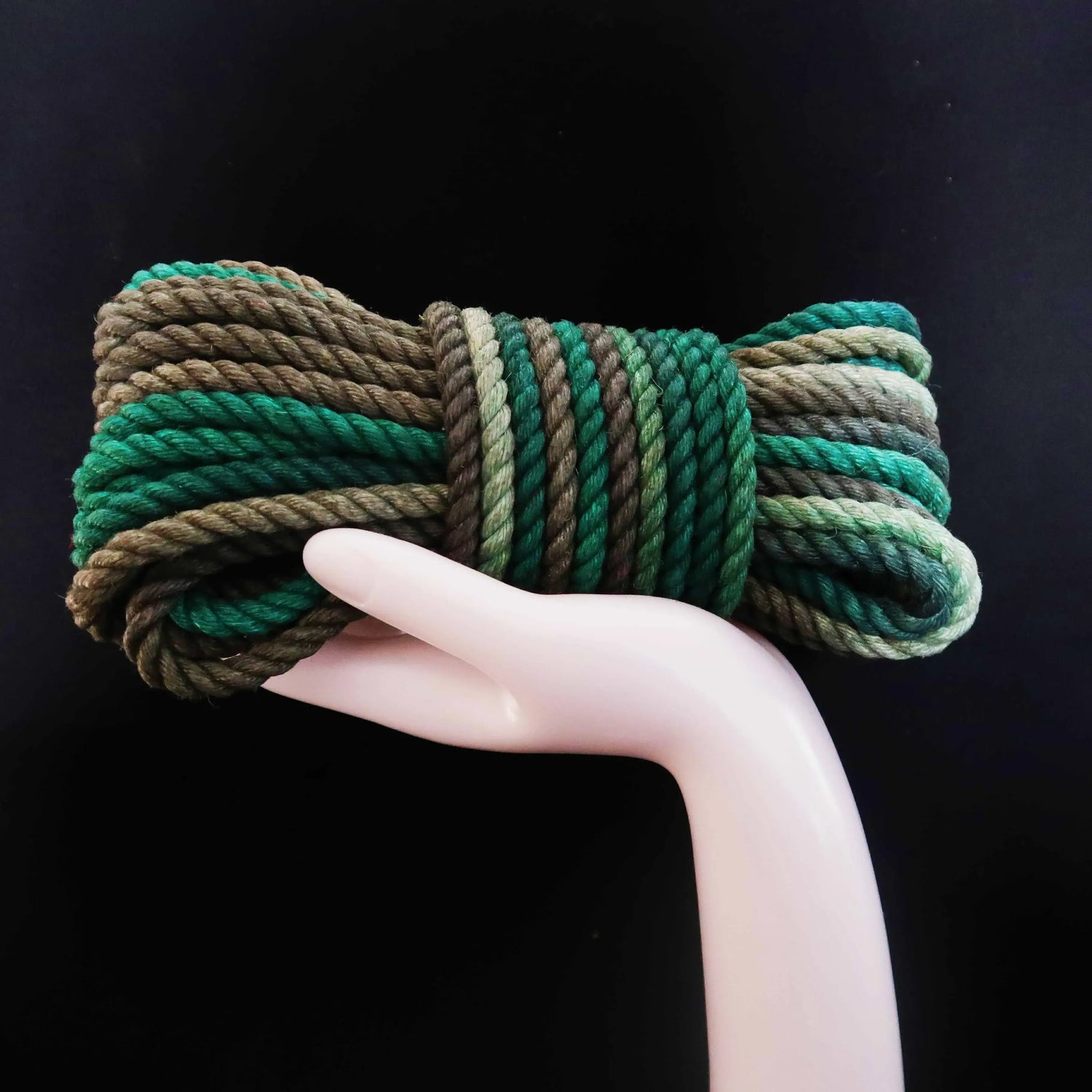There isn't a definitive "best" rope for Shibari, as each type has its own advantages and disadvantages. The ideal rope choice depends on your preferences, activities, and skin sensitivity. Let's explore Hemp, cotton, nylon, climbing rope, and posh ropes, outlining their pros and cons to help you decide what suits you best.
Hemp and Jute:
Hemp and Jute are the two primary rope materials used in modern shibari. Hemp is softer and more flexible than jute, making it more comfortable for the person being tied. However, hemp ropes are pricier than jute ropes.
The advantages of using natural fiber ropes like hemp or jute include:
- Their rough texture allows you to create knots that grip better due to friction, preventing slipping.
- These ropes do not stretch, maintaining their shape under tension and allowing you to control knot tightness with your hands.
- Thin rope widths are excellent for creating visually pleasing knots.
- While pre-treated hemp rope kits can be costly, treating the ropes yourself can make them more budget-friendly. Learn how to treat your own Shibari hemp ropes at shibarirope.com.
Cotton:
Cotton is a common Shibari rope choice, especially for beginners. The benefits of cotton include:
- Cost-effective option for those starting out in Shibari.
- Softer than hemp, offering comfort to the person being tied.
- Beginner-friendly due to lower risk of rope burns.
- Becomes even softer after washing.
- Easy to dye for customization.
- Lightweight and easy to carry around.
However, cotton has some drawbacks:
- Elasticity leads to stretching under tension, making knot control and untying challenging.
- Does not absorb lubricating oil, resulting in a coarse feel when dry.
- Prone to getting dirty and fuzzy, affecting the appearance of the ropes.
Nylon
Nylon is a popular choice in Europe and America. It's smoother than natural fiber ropes, making knot security challenging without specific techniques. We won't cover these techniques in our tutorials.
The benefits of nylon include:
- Affordability, smoothness, and flexibility.
- Requires high tension for rope burns to occur.
- Easy maintenance: simply wash and air dry them.
CLIMBING ROPE
In short, avoid using them.
They are rigid, hindering intricate knot tying. They cause rope burns quickly, posing a risk to the person being tied. The rough texture makes ties uncomfortable on the skin. However, they are reliable for holding substantial tension.
POSH
Posh ropes are synthetic and can visually resemble hemp but at a lower cost.
Advantages of posh ropes:
- Greater durability compared to natural fibers.
- Stiffer than hemp, making intricate knots more challenging.
- Availability may be limited as they are not widely stocked.
With a variety of ropes available, we suggest you try different types to find what suits you best. Personally, I prefer hemp due to its ideal mix of flexibility, tension control, friction, and softness.

